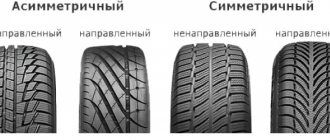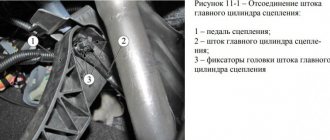The new 16-valve engine of the Lada Largus has become more powerful (characteristics)
From October 2022, the Lada Largus received a new 16 valve engine with 106 hp. Previously, a 16-valve unit with a capacity of 102 hp was installed under the hood of the car. Actually on Lada Largus
We replaced the Renault K4M engine, recognizable from the Renault Logan, with a Russian-developed VAZ-21129 engine, which is found in the Lada Vesta, Granta and Kalina.
Structurally, the new engine for Largus is essentially an in-line 4-cylinder 16-valve engine with a metal cylinder block and a timing belt. The motor does not have hydraulic compensators. However, the “French” fire engine had hydraulic compensators, but in fact the same cast iron and timing belt.
The Russian engine is more reliable and does not even require high-quality fuel. The manufacturer announced the consumption of AI-92 gasoline. As AvtoVAZ engineers say, the new engine for Largus will make the car a little more economical and dynamic. In fact, quite recently the Togliatti auto giant abandoned the French 8-valve K7M engine in favor of the same Russian version of the 8-valve VAZ-11189 engine.
LADA Largus
with a LADA engine with a power of 106 hp. is equipped with a modernized Renault manual transmission, designed specifically for the new engine. The gear ratios of the third, fourth and fifth gears have been changed. The new unit allows you to move briskly with the lowest engine speeds, in this case acoustic comfort is increased and fuel consumption is reduced. The modernized box is installed on our client's remaining models of the Largus family with 16-valve engines.
What engines are being installed on Largus in 2022.
Description of the K7M engine (Renault Logan/Sandero/Largus)
In 2022, the K7M 800 engine appeared, which replaced the K7M 710. No design changes occurred, except that the engine was strangled, bringing it up to the Euro-4 environmental standard, while the power decreased from 86 hp to 83 hp. With.
The disadvantages of the engine remain the same:
- high fuel consumption.
- At idle the speed often fluctuates.
- Every 20-30 thousand km the valves need to be adjusted.
- no hydraulic compensators.
- If the belt breaks, the valve bends; it is recommended to change the belt every 60 thousand km.
- crankshaft oil seal leaking.
- the engine is noisy.
- there are vibrations during operation.
If you look at the engine from the positive side, it is worth noting its high reliability; according to the passport, the engine life is about 400 thousand km, but in practice it is a little more.
About engines for Lada Largus
The Lada Largus station wagon was created on the Renault Logan MCV platform in 2012. The power units on the Lada Largus are 8 and 16 valve engines from Renault Logan - the traditional K7M 8 with a power of 86 “horses” and the modern K4M with 16 valves and a performance of 105 hp.
There is also a Lada Largus with a VAZ-11189 engine from LADA Vesta, but essentially this is the same engine 11186 from Granta, but already tuned to Euro-5 eco-standards.
Engine Renault K7M 710/800 1.6 8V
The power unit of the Renault Logan K7M 710 with a volume of 1.6 liters and a power of 89 “horses” is the same K7J 1.4 L, but with an increased piston stroke (up to 80.5 mm), an increased block height, a clutch expanded in diameter, and an enlarged flywheel and a different shape of the gearbox housing.
Like its low-volume counterpart, the Renault K7M 710 engine is designed in the old fashioned way: with rocker arms and a vague oil pump drive system from Renault with a lower shaft, produced in the 60s.
However, with careful treatment of the engine, timely maintenance, and changing the oil twice as often as indicated in the instructions, the engine will run more than 400 thousand kilometers.
In 2010, there were changes in engine power: it was brought up to the Euro 4 eco-standard, productivity was reduced to 83 hp. and called K7M 800.
The main disadvantages of the Renault K7M 710/800 1.6 8V include high fuel consumption, floating speed at idle, valves that require adjustment every 20-30 thousand km, the absence of hydraulic compensators and a timing belt drive that requires replacement every 60 thousand km. Also disadvantages include crankshaft oil seal leakage, noisy engine operation and vibration.
If there is a choice between 1.4 or 1.6 8 valve, then experts recommend an engine volume of 1.6 liters, since a smaller volume does not have strong characteristics.
If you remove the catalyst, then the Logan K7M 800 engine will have the same performance as before - 86 hp. And when installing an exhaust and sports firmware, the engine can produce a couple more “horses,” but apart from fuel consumption, you won’t have to expect any special changes.
Engine Renault K4M 1.6 l. 16
Before you get under the hood of the Lada Largus, the Renault K4M 1.6 liter engine. visited Renault Megane, Renault Clio II, Renault Laguna and other models.
This modification of K4M 1.6 is an evolution of the K7M series with a different cylinder head with 16 valves.
The Renault K4M 1.6 L 16 engine differs from its predecessors in a different head with a pair of lightweight camshafts, different pistons, hydraulic compensators and more. The motor may contain a phase regulator, and the compression ratio varies between 9.5 and 10. In this regard, there is a slight variation in the power characteristics of the engine, but everything else in the K4M is identical.
The disadvantages of the motor include the high price of spare parts. There are failures in engine operation, and if the fuel is of poor quality, the speed begins to fluctuate. When the timing belt breaks, the valves bend and therefore the belt and rollers need to be changed every 60 thousand km. The wheel position sensor and ignition coil can cause floating speed and unstable operation of the K4M.
Compared to an 8-valve engine, the 16V is quieter, more economical and vibration-free.
| K7M 710/800 1.6 8V | Renault K4M 1.6 l. 16 | |
| Production | Automobile Dacia | Renault Espana/AvtoVAZ |
| Engine make | K7M | K4M |
| Years of manufacture | K7M 710 (2004 - 2010), K7M 800 (2010 - present time) | 1999 - our time |
| Cylinder block material | cast iron | Cast iron |
| Supply system | injector | Injector |
| Type | in-line | Row |
| Number of cylinders | 4 | 4 |
| Valves per cylinder | 2 | 4 |
| Piston stroke, mm | 80,5 | 80,5 |
| Cylinder diameter, mm | 79,5 | 79,5 |
| Compression ratio | 9,5 | 9,5 |
| Engine capacity, cc | 1598 | 1598 |
| Engine power, hp/rpm | 86/5500 | 102-115/5750 |
| Torque, Nm/rpm | 128/3000 | 145-147/3750 |
| Fuel | 92 | 92 |
| Environmental standards | Euro 3 | Euro 4 |
| Engine weight, kg | ||
| Fuel consumption, l/100 km (for Celica GT) - city - highway - mixed. | 10 5,8 7,2 | 11,8 6,7 8,4 |
| Oil consumption, g/1000 km | Up to 500 | Up to 500 |
| Engine oil | 5W-40 5W-30 | 5W-40 5W-30 |
| How much oil is in the engine | ||
| Oil change carried out, km | 7500 | |
| Engine life, thousand km - according to the plant - in practice | 400 400+ | No data 400+ |
| Tuning - potential - without loss of resource | No data +/- 120 hp | |
| The engine was installed | Renault Logan Renault Sandero Lada Largus | Renault Logan Renault Sandero Renault Kangoo 1 and 2 Renault Duster Lada Largus Renault Megane 1, 2, 3 Nissan Almera G11 Renault Clio 2 Renault Laguna 1, 2 Renault Scenic Renault Fluence |
It's fun to walk together. Test drive of the DFM 580 crossover
See all photo news >>
What engine is Lada Largus 8 valves?
The Lada Largus engine has 8 valves and has the VAZ-11189 index. Not to say that this is a completely new engine. But a significantly modified VAZ 8-valve. Firstly, the engine was completely redesigned for the Lada Largus. Therefore, we started by completely changing the engine mounts in order to comfortably place it under the hood of a station wagon.
Next, all attachments were replaced - generator, power steering pump, air conditioning compressor. Also
The piston group was replaced and completely redesigned, which now includes lightweight connecting rods and pistons. In addition, many modifications had to be made in order to place the Russian engine under the station wagon hood. For example, change the electrical wiring, lay hoses, change the intake and exhaust systems, move the battery and washer reservoir, etc.
Car appearance
It would be more correct to start the comparison with a station wagon from Russia, because this particular car is positioned as an alternative to the “French”.
Exterior and characteristics of Lada Largus and Renault Logan
Initially, the Russian car was modified to take into account the harsh conditions of our winters. In addition, the manufacturer applied special treatment to prevent corrosion of individual elements. The anti-corrosion layer is mainly used on the underbody and wheel arches. The thickness of the coating is approximately 5 mm thicker in comparison with Logan. The anticorrosive layer contains components that increase resistance to sudden temperature changes and the negative effects of various chemical reagents used to treat road surfaces.
Many note a more attractive exterior in comparison with Renault Logan. The paintwork on both cars is of high quality, the paint is resistant to chips, abrasions, etc. The overall dimensions of both of them - the Renault Logan or the Lada Largus - are approximately the same. The French station wagon has a length of 4492 mm, while the Lada Largus has 4470 mm. The width, height and wheelbase of the cars are virtually identical.
Largus has the advantage of protective linings on the arches. Moreover, these elements can be installed even in the basic configuration. Renault Logan does not have this. Largus is protected from gravel and small dust particles by rear pads. Additionally, there is an anti-gravel coating over a large area. The Frenchman cannot boast of this. Renault does not have a rear windshield wiper; Largus already has this useful accessory.
Largusology
I have been driving a Lada Largus station wagon with a Renault K4M engine for three years now. And AvtoVAZ recently introduced engines of its own design in Largusy, with the index 11189. How could you not compare this with mine? I compared it.
The VAZ-11189 engine has been known for a long time; Kalina and Granta are equipped with it. No technical frills, two valves per cylinder - simplicity itself. As a result, there is more room under the hood; however, the implementation entailed a redesign of the engine compartment. The air filter, unified with Vesta, required moving the expansion tank to the right side member, and the tank itself was used from the XRAY model. Notorious detail: during our life tests, these burst constantly. We can only hope that we have learned how to firmly weld the tank halves.
As usual, before testing, the first thing we do is subject the machines to a weight analysis. Moreover, we got the Largus with a VAZ engine (hereinafter referred to as Vazolargus) in a seven-seater modification; there is reason to believe that it will be noticeably heavier. I didn’t guess: it turned out to be twelve kilograms lighter than my five-seater with a Renault engine (hereinafter referred to as Renolargus). The weight distribution of the cars is also different: there is noticeably less weight on the front of the Vasolargus.
Of course, the masses were equalized for the correctness of measurements; For this purpose, during the work process, the wheel assemblies were changed from machine to machine, so that each exercise was performed on the same tires. The fuel was also identical - AI-95. Why? Although “ninety-second” gasoline is approved for the VAZ-11189 engine, the instructions indicate that all the characteristics were obtained on AI-95, which is what they filled in with.
Acceleration measurements showed that the results differ by an insignificant one and a half seconds to “hundreds”. And the maximum speed of Renolargus is as much as 10 km/h higher.
The full version is available to subscribers onlySubscribe now
I'm already subscribed
Salon
The interior of the Lada Largus 2022 has not undergone any changes, except for the seat trim material: the developers proposed a new, more practical and wear-resistant fabric.
The luggage compartment in the passenger version, as before, can be increased by folding the second row seats and removing the third row seats (if equipped). In this case, the volume of cargo space will reach 2.5 cubic meters.
Oil for Lada Largus 8 valve engine
In terms of lubricant, the 8-valve Lada Largus engine is very unpretentious. You can fill in oils with a viscosity of 5W-30 / 5W-40 / 10W-40 / 15W-40. The quality of the oil must be no lower than SM according to API and no lower than GF-4 according to ILSAC. 90% of motor oils in stores meet these requirements and cost quite reasonable money.
From my personal experience I will say this: you can fill in almost any motor oil. The main thing is that it is not fake. And you need to change the oil in a timely manner - preferably after 5-7 thousand kilometers.
Modifications and options
The total number of modifications of the Lada Largus 2022 model year, taking into account engines, interior design and available equipment packages, reaches 15.
There are only five basic equipment levels offered by most branded car dealerships:
- Standard. Includes a driver's airbag, anti-lock brakes, brake force distribution system, 15-inch steel wheels, fabric upholstery, halogen headlights, athermal glazing, a full spare tire and an immobilizer (cost from 598 thousand rubles).
- Classic. The above equipment includes roof rails, bumpers in the color of the new body, electric front windows, heated front seats and central locking with remote control (cost from 624 thousand rubles). There is also a Classic A/C package with air conditioning and a version with a 7-seater saloon (from 677 thousand rubles)
- Comfort. A passenger airbag with a deactivation function and an audio system with MP3 support, 4 speakers, a Bluetooth system and a connector for connecting external audio devices are added (cost from 693 thousand rubles). The intermediate package CNG Comfort adds a luggage compartment curtain to the list.
- Luxe. The basic equipment of the new Lada Largus 2020 body has been expanded to include side mirrors and door handles in body color, fog lights, rear parking sensors, electric rear windows and side mirrors (+ heating), as well as an on-board computer (cost from 714 thousand rubles)
- Luxe Prestige. Factory tinted glass is added to the list of top-end equipment (cost from 729 thousand rubles)
About the domestic VAZ 11189 engine
In April 2022, AvtoVAZ began installing domestic VAZ 11189 engines on Largus. The advantages of this engine are described in one of the issues of “Okay Mechanics”.
| Some measurement results Autoreview | |||
| Options | Cars | ||
| Lada Largus (VAZ engine) | Lada Largus (Renault engine) | ||
| Maximum speed, km/h | 157,1/156,7* | 168,0/167,6 | |
| Acceleration time, s | 0—50 km/h | 4,3/4,8 | 3,9/4,4 |
| 0—100 km/h | 13,9/16,8 | 12,5/14,5 | |
| 0—150 km/h | 61,1/71,6 | 38,9/43,7 | |
| on the way 400 m | 19,3/20,2 | 18,4/19,4 | |
| on the way 1000 m | 36,1/37,8 | 34,1/36,0 | |
| 60-100 km/h (III) | 8,7/10,6 | 9,3/10,6 | |
| 60-100 km/h (IV) | 12,1/15,1 | 12,8/14,1 | |
| 80-120 km/h (V) | 19,3/24,0 | 22,1/23,4 | |
| * Partial load/full load | |||
| Engine characteristics | ||
| Options | VAZ-11189 | Renault K4M |
| Volume, cm3 | 1596 | 1598 |
| Number of valves | 8 | 16 |
| Maximum power, hp/kW/rpm | 87/64/5100 | 102/75/5750 |
| Maximum torque, Nm/rpm | 140/3800 | 145/3750 |
| Cylinder diameter/piston stroke, mm | 82,0/ 75,6 | 79,5/80,5 |
| Compression ratio | 10,3:1 | 9,8:1 |
| Injection type | distributed, electronically controlled | |
| Octane number of gasoline | at least 92 | not less than 95 |
New Lada: Lada Priora for sale in Surgut
Let us remind you that you can read about the VAZ 21129 engine here.
Key words: Lada Largus engine
29
14
Found an error? Select it and press Ctrl Enter..
- LADA car sales statistics in July 2022
- Roof rack for Lada Priora sedan and hatchback, installation of roof rails
- Feedback from the owner of Lada Vesta after 50 thousand kilometers (2 years of operation)
- Removing the rear light and replacing lamps Lada Kalina 2
Options and prices
Standard
Standard configuration is available in a 5-seater version for 669,900 rubles. The head optics do not have an overly complex system or content. The lights and headlights received halogen filling, and the rear lighting equipment was reinforced with additional brake lights. The basic version includes heat-insulating glazing and heated rear window, which makes the car suitable for use in the Russian climate. The roof has durable roof rails for carrying cargo. Metallic paint is only available as an option, regardless of trim level. Inside, the driver can adjust the steering column vertically. The difference between the basic version is four headrests, in the rest their number increases to five. There is only one airbag. You will also have to fork out extra money for installing the ERA-GLONASS system. Motion control systems include ABS and EBD. In-cabin amenities are limited to a cabin air filter.
Classic
A significant functional increase is available for the Classic package, which received a couple of design options. The five-seater version is sold at a price of 616,900 rubles. The Classic A/C version for 7 seats will cost the owner 646,900 rubles. The list of additional equipment included:
- power steering;
- mirrors in visors;
- central locking;
- electric drive for front windows;
- ERA-GLONASS.
Comfort
Comfort package is also available in two seating options. The minimum will cost 672,900 rubles, the extended one will cost 23,000 rubles more. Moreover, this assembly has the ability to connect gas equipment from the manufacturer. For the version with a 106-horsepower engine and a gas-gasoline power system, you will have to pay 872,900 rubles. Please note that in this case you can only count on five-person occupancy. The main changes were made to the interior, in particular, electric heating for the first row of seats, a second airbag and air conditioning appeared. Users have access to a radio, CD player with MP3 support and Hands Free. Instead of two speakers, the “Comfort” version implies the presence of four with the ability to connect AUX and USB devices. A bonus is the height adjustment of the first row seat belts.
Luxe
package opens up wide possibilities . The gasoline model will cost 706,900 rubles for 7 seats. Installing HBO automatically raises the price of the five-seater version to 893,900 rubles. The buyer can count on installation:
- front fog lights;
- heated and electric side mirrors painted in body color;
- painted door handles;
- decorative interior trim in black, gray and brown;
- driver's seat height adjustment;
- lumbar support on captain's chairs;
- full package of electric windows;
- remote control;
- rear parking sensors;
- on-board computer.
Luxe Prestige
The previous version came as close as possible to the flagship version Luxe Prestige , costing from 721,900 rubles for versions with a gasoline engine and 899,900 for the version with gas equipment on board. The differences are decorative: aluminum wheels, rear tinting, and a leather steering wheel appear. In September 2022, it became known about the release of a special version of the Lada Largus 2022 Club. The price for the modification is still unknown. The list of additions includes factory tinting and parking sensors. A badge with the hashtag #CLUB will be added to the interior and tailgate.
Options and prices (table)
| Equipment | Volume, l | Fuel | Motor, hp | Box | Dynamics up to 100 km/h, sec | Cool. moment, N×m | Drive unit | Maximum speed, km/h | Consumption in mixed cycle, l | Price, ₽ |
| Classic 5 seats | 1.6 | petrol | 87 | M.T. | 14.4 | 140 | front | 158 | 10.5 | 618 900 |
| Classic A/C 7 seats | 1.6 | petrol | 87 | M.T. | 15.4 | 140 | front | 158 | 10.5 | 648 900 |
| Luxe 7 seats | 1.6 | petrol | 106 | M.T. | 14.5 | 148 | front | 165 | 10 | 708 900 |
| CNG Comfort 5 seats | 1.6 | gas | petrol | 106 | M.T. | 13.5 | 148 | front | 165 | 10 | 874 900 |
| CNG Luxe Prestige 5 seats | 1.6 | gas | petrol | 106 | M.T. | 13.5 | 148 | front | 165 | 10 | 901 900 |
| CNG CNG Luxe 5 seats | 1.6 | gas | petrol | 106 | M.T. | 13.5 | 148 | front | 165 | 10 | 895 900 |
| Standard 5 seats | 1.6 | petrol | 87 | M.T. | 14.4 | 140 | front | 158 | 10.5 | 671 900 |
| Comfort 7 seats | 1.6 | petrol | 106 | M.T. | 14.5 | 148 | front | 165 | 10 | 687 900 |
| Luxe Prestige 7 seats | 1.6 | petrol | 106 | M.T. | 14.5 | 148 | front | 165 | 10 | 723 900 |
| Standard 5 seats | 1.6 | petrol | 106 | M.T. | 13.5 | 148 | front | 165 | 10 | 746 900 |
Prices for configurations are approximate and may vary depending on the region.
Fuel consumption Lada Largus 8 valve engine
Another stumbling block when choosing an engine for the Lada Largus station wagon is its fuel consumption. Unfortunately, this power unit is not very economical, but it doesn’t eat too much either.
If we talk about passport data, we can see the following numbers:
City - 10.6 l / 100 km Highway - 7.6 l / 100 km Combined cycle - 8.2 l / 100 km
Yes, the numbers are not amazingly economical. But for a working station wagon they are quite adequate.
Getting to know the car
The Lada Largus station wagon was presented to the public in 2014 as a worthy analogue to imported offerings. Thanks to its increased capacity and acceptable cross-country ability, the car has become widespread in the CIS countries. The advantage of the model is the availability of up to 7 seats and a spacious cargo compartment. Also of interest is the fact that the transport is a joint development of AvtoVAZ and the Renault-Nissan concern. The first collaboration yielded decent results - some of the car's components were developed by Renault.
Thanks to the desire to comply with modern trends, Lada is offered in several trim levels. Each one stands out with its own characteristics and unique equipment.
Technical characteristics of Lada Largus engines
| Options | Engine model | |
| RENAULT, K4M | RENAULT, K7M | |
| Injection type | Electronically controlled multipoint fuel injection | |
| Fuel type | Gasoline Premium-95 GOST 51105-97 | |
| Number and arrangement of cylinders | 4, in-line | |
| Number of valves | 16 | 8 |
| Cylinder operating order | 1-3-4-2 | |
| Direction of rotation of the crankshaft (camshaft drive side) | ||
| right | ||
| Cylinder diameter/piston stroke, mm | 79,5×80,5 | |
| Working volume, cm3 | 1598 | |
| Compression ratio | 9,8 | 9,5 |
| Toxicity standards | Euro 4 | |
| Power at 5500 rpm, kW (hp) | – | 62 (84) |
| Power at 5750 rpm, kW (hp) | 77 (105) | – |
| Maximum torque, N.m (at rpm) | 148 (3750) | 124 (3000) |
| Volume of oil poured into the engine lubrication system, including oil filter, l | 4,8 | 3,3 |
Engine design 8 valves Lada Lagrus
If you have ever owned a VAZ car, then you can already imagine how the 8-valve VAZ Lada Largus engine works.
This is a cast iron block that resists wear well. Aluminum cylinder head and valve cover, as well as a pan made of steel.
Number of cylinders - 4, number of valves - 8.
The timing drive, traditionally for Russian front-wheel drive cars, is belt driven. This made it possible to reduce the noise of the engine, but at the same time reduced the life of the belt. Although replacing the Lada Largus timing belt and rollers is a simple procedure that can be performed even in any garage.
There are no hydraulic compensators in this engine. Their installation would have increased the cost of the design, so the factory abandoned them. Valve clearances are adjusted using special shims. This procedure should be carried out at least once every 30 thousand kilometers. In general, such work will not hit your pocket hard, since there are plenty of specialists, and adjusting washers are available in different sizes for quite reasonable money.
The intake manifold is plastic, the exhaust has a cat manifold. The throttle is electronic.
Injection - distributed through injectors in the fuel rail.
Renault engines
The K7M (8 valves) and K4M (16 valves) engines are representatives of the same series. With timely maintenance, they show an excellent service life (over 400 thousand km). But if you skip maintenance, both engines can give you an unpleasant surprise. For example, both K7M and K4M bend valves when the timing belt breaks. Therefore, it is recommended to change the belt every 60 (or better yet, 50 thousand km).
More details about K7M (8 valves)
Initially, the eight-valve K7M had 86 hp. with a volume of 1.6 liters. But in 2010 it was modified to meet the Euro-4 standard, and it lost 3 horsepower.
K7M has a simple and reliable design. With timely care, it can travel up to 500 thousand km. You just need to change the timing belt, tension rollers on time and not skip maintenance.
Engine weaknesses:
- High fuel consumption - 12.3 l/100 km in the city.
- Weak power and dynamics.
- Strong noise and vibration during operation.
- It is necessary to adjust the valves every 25-30 thousand km.
K7M is a demanding engine with high fuel consumption and poor dynamics. 83 hp not enough for a comfortable ride in Lada Largus. The lack of horsepower is especially noticeable when driving outside the city.
More details about K4M (16 valves)
Improved version of K7M. Volume 1.6. liters and 102 hp It adopted the problems of the previous version - high fuel consumption and high maintenance requirements. But it boasts much better driving dynamics. Installed in the “Lux” configuration.
Engine weaknesses:
- High fuel consumption ¬ 11.7 l/km in the city.
- Expensive spare parts.
- Possible failures in operation due to low-quality fuel.
- It often troits (usually the problem is in the ignition coil, injectors or spark plugs).
With timely maintenance, the engine, like the K7M, can travel more than 400 thousand km.
French engines K7M and K4M are obsolete, but they are still extremely reliable in operation. If a person is ready to put up with high fuel consumption and the need to regularly visit a car service center, the Lada Largus with such an engine will be an excellent choice.
If we compare only 2 Renault engines, then the K4M wins. It is more dynamic, more powerful and easier to maintain.
Whose engine is the Lada Largus?
Previously, engines for Lada Largus came assembled from the Renault plant in Spain, but recently engines of the K4M series (16 valves, 105 hp) began to be assembled at AvtoVAZ. According to the director of the Power Units project, Francois Goujon, the quality of engines assembled at AvtoVAZ corresponds to the world level.
The AvtoVAZ press service assures that a quality system is used in the production of new engines to ensure that products comply with the international standards of the alliance. In addition to personnel training, it includes control on the production line, during which each assembled engine is tested in different modes on a special stand. The technology also provides for a weekly check, when one of the motors is completely disassembled and the quality of its assembly is analyzed.
Close-up view - K4M engine on video
Depending on the year of manufacture, the Largus may be equipped with a Renault or VAZ engine. Currently, only domestic engines are installed on this car. Let's take a closer look at the technical characteristics of Lada Largus engines, as well as the features of their assembly.
- Renault-Nissan K7M
(8 valves) with a volume of 1.6 liters is capable of developing a power of 84 hp. This motor is installed on the “standard” and “norm” configurations. - Renault-Nissan K4M
(16 valves) is slightly more powerful, with 105 hp. or 77 kW. The motor is provided for the “luxury” configuration. - VAZ 11189
(8 valve engine) began to be installed instead of K7M in 2015. - VAZ 21129
(16 valves) began to be installed instead of Renault K4M in October 2017.











